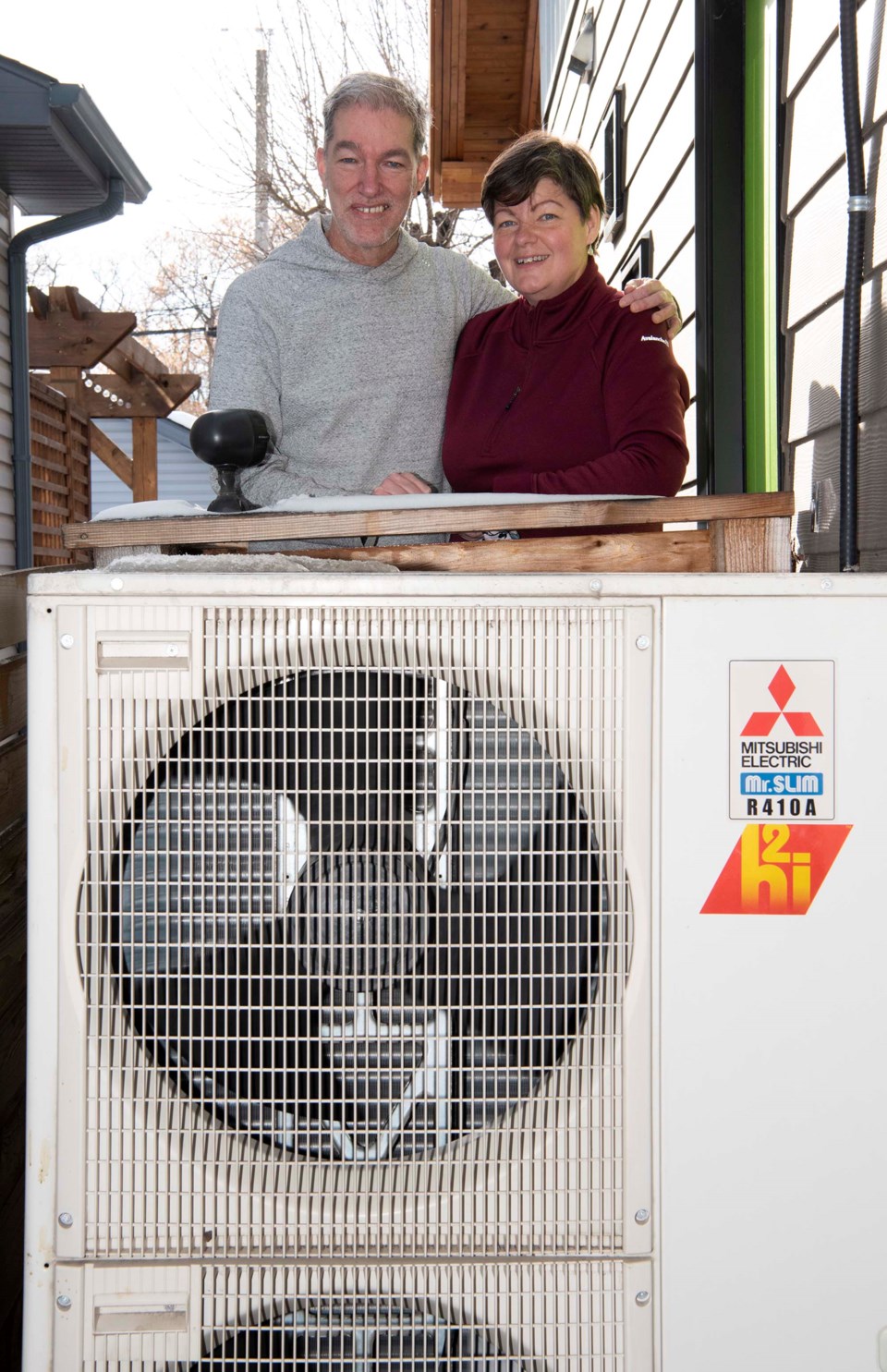Correction
This story originally stated the Horsmans saved $600 a month on fixed fees related to natural gas. They actually save $600 a year. The Gazette apologizes for this mistake.
If you were a nosy neighbour, you might have wondered why the air conditioner outside Paul Horsman’s Edmonton home kept whirring along even during the coldest days of last winter.
That’s because that “air conditioner” is actually the home’s heater – an air-source heat pump that keeps his home cozy warm by sucking energy out of the frigid winter air.
“There’s heat in the air at all times unless you hit absolute zero,” Horsman explained, and an air-source heat pump can harvest that heat to warm your home.
That pump, plus his electric car and the many other features of his net-zero home (which he designed himself), has helped whittle his monthly energy bills down to a fraction of what the average Albertan pays.
“It’s costing us about $50 to $60 a month for everything,” Horsman said, by which he meant heat, hot water, electricity and transportation.
“There’s potential for considerable savings once you put the investment in.”
And that’s on top of the environmental benefits, he continued – because of his heat pump, he’s able to heat and cool his house without burning any fossil fuels.
“It’s pretty neat.”
The reversible AC
Air-source heat pumps have become more common in super-efficient homes around Edmonton in recent years. St. Albert’s net-zero home has one, and Morinville’s Paul Krauskopf Court has a whole battery of them.
An air-source heat pump is essentially an air-conditioner you can throw into reverse, said Andrew Mills, organizer of the Eco-Solar Home Tour.
The pump runs refrigerant under low pressure through coils outside the home so it boils, absorbing heat. The refrigerant then gets compressed back into a liquid inside the home, releasing heat. This process runs in reverse when you want to cool your home.
“Every hotel you go to has an air-source heat pump sitting in the window,” Mills said, and he had one in his Nissan Leaf car.
Mills said air-source heat pumps weren’t able to harvest heat out of air colder than -15 C about a decade ago, which was why you didn’t see them outside of warm climates such as Vancouver. That changed in around 2011, when Mitsubishi introduced pumps that could take Edmonton’s winters, and net-zero home designers started adding them to structures in this region.
An air-source heat pump’s claim to fame is its efficiency. Whereas a top-of-the-line gas furnace might be 97 per cent efficient and an electric one 100 per cent, air-source pumps can be over 250 per cent efficient, said Horsman and Mills – it takes less energy to move a unit of heat than it does to create one, and the heat pump gets its heat by stealing it from the outdoors. They get less efficient the colder it gets outside, though, and most switch over to electric heating coils past a certain point.
An air-source heat pump lets you get rid of your natural gas line, which Horsman said saved him about $600 a year in fixed fees. Since he also has solar panels on his roof for power, he can heat and cool his home without producing any heat-trapping pollution from fossil fuels.
Save it for last
Mills and Horsman said air-source heat pumps cost about the same as a gas furnace and air conditioner combined, and require about the same amount of maintenance (you change a filter every once and awhile). They do produce a puddle of ice underneath them due to condensation, so you have to account for that when you place it – Horsman simply elevated his off the ground.
But because electricity is more expensive than gas, Mills said it generally is not worth it to install an air-source heat pump unless you make your home super-efficient and get your heating needs as low as possible. Go for extra-insulated walls and windows, minimal air leaks, solar panels and other net-zero home features before you reach for the air-source heat pump. If you have an amazingly efficient home, you might save more money with electric baseboard heaters.
Natural Resources Canada has a guide to air-source heat pumps at bit.ly/37GSpQE.




